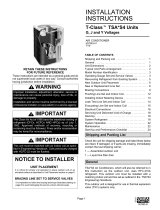
Table 12. HFC-410A Temp. (°F) - Pressure (Psig)
°F Psig °F Psig °F Psig °F Psig
-40 10.1 21 80.5 56 158.2 91 278.2
-35 13.5 22 82.3 57 161.0 92 282.3
-30 17.2 23 84.1 58 163.9 93 286.5
-25 21.4 24 85.9 59 166.7 94 290.8
-20 25.9 25 87.8 60 169.6 95 295.1
-18 27.8 26 89.7 61 172.6 96 299.4
-16 29.7 27 91.6 62 175.4 97 303.8
-14 31.8 28 93.5 63 178.5 98 308.2
-12 33.9 29 95.5 64 181.6 99 312.7
-10 36.1 30 97.5 65 184.3 100 317.2
-8 38.4 31 99.5 66 187.7 101 321.8
-6 40.7 32 100.8 67 190.9 102 326.4
-4 43.1 33 102.9 68 194.1 103 331.0
-2 45.6 34 105.0 69 197.3 104 335.7
0 48.2 35 107.1 70 200.6 105 340.5
1 49.5 36 109.2 71 203.9 106 345.3
2 50.9 37 111.4 72 207.2 107 350.1
3 52.2 38 113.6 73 210.6 108 355.0
4 53.6 39 115.8 74 214.0 109 360.0
5 55.0 40 118.0 75 217.4 110 365.0
6 56.4 41 120.3 76 220.9 111 370.0
7 57.9 42 122.6 77 224.4 112 375.1
8 59.3 43 125.0 78 228.0 113 380.2
9 60.8 44 127.3 79 231.6 114 385.4
10 62.3 45 129.7 80 235.3 115 390.7
11 63.9 46 132.2 81 239.0 116 396.0
12 65.4 47 134.6 82 242.7 117 401.3
13 67.0 48 137.1 83 246.5 118 406.7
14 68.6 49 139.6 84 250.3 119 412.2
15 70.2 50 142.2 85 254.1 120 417.7
16 71.9 51 144.8 86 258.0 121 423.2
17 73.5 52 147.4 87 262.0 122 428.8
18 75.2 53 150.1 88 266.0 123 434.5
19 77.0 54 152.8 89 270.0 124 440.2
20 78.7 55 155.5 90 274.1 125 445.9
The outdoor unit and indoor blower cycle on demand from
the room thermostat. If the thermostat blower switch is in
the ON position, the indoor blower operates continuously.
FILTER DRIER
The unit is equipped with a large-capacity biflow filter drier
which keeps the system clean and dry. If replacement is
necessary, order another of the same design and capacity.
The replacement filter drier must be suitable for use with
HFC-410A refrigerant.
LOW PRESSURE SWITCH (OPTIONAL)
The 14HPX may be equipped with an optional auto-reset
low pressure switch which is located on the vapor line. The
switch shuts off the compressor when the vapor pressure
falls below the factory setting. This switch, which is ignored
during defrost operation, closes at pressures at or above
55 psig and opens at 25 psig. It is not adjustable.
HIGH PRESSURE SWITCH
The 14HPX is equipped with an auto-reset high pressure
switch (single-pole, single-throw) which is located on the
liquid line. The switch shuts off the compressor when dis-
charge pressure rises above the factory setting. The
switch is normally closed and is permanently adjusted to
trip (open) at 590 + 10 psig (4412 + 69 kPa).
NOTE -A Schrader core is under the pressure switches.
DEFROST SYSTEM DESCRIPTION
The demand defrost controller measures differential tem-
peratures to detect when the system is performing poorly
because of ice build-up on the outdoor coil. The controller
"self-calibrates" when the defrost system starts and after
each system defrost cycle. The defrost control board com-
ponents are shown in figure 19.
The control monitors ambient temperature, outdoor coil
temperature, and total run time to determine when a de-
frost cycle is required. The coil temperature probe is de-
signed with a spring clip to allow mounting to the outside
coil tubing. The location of the coil sensor is important for
proper defrost operation.
NOTE -The demand defrost board accurately measures
the performance of the system as frost accumulates on the
outdoor coil. This typically will translate into longer running
time between defrost cycles as more frost accumulates on
the outdoor coil before the board initiates defrost cycles.
DIAGNOSTIC LEDS
The state (Off, On, Flashing) of two LEDs on the defrost
board (DS1 [Red] and DS2 [Green])indicate diagnostics
conditions that are described in table 14.
TEST PINS --
DEFROST
TERMINATION
PIN SETTINGS
SENSOR
PLUG IN
(COIL & AM-
BIENT
SENSORS)
DELAY
PINS
REVERSING
VALVE
r[-_r- PI
O ®
oo,7= o
I1
0 wI
L0-PS
/Z =
f2 0u_
So
0 Iololol°l°lol°lol 0
TS_PS Or c _{ 0 _1 Yz
-- LOW
AMBIENT
THERMOSTAT
PINS
-- DIAGNOSTIC
LEDS
t 24V TERMINAL
STRIP
CONNECTIONS
Note - Compo-
nent Locations
Vary by Board
Manufacturer,
Figure 19. Defrost Control Board
DEFROST BOARD PRESSURE SWITCH CONNEC-
TIONS
The unit's automatic reset pressure switches (LOPS - S87
and HI PS - S4) are factory-wired into the defrost board on
the LO-PS and HI-PS terminals, respectively.
Page 17
14HPX SERIES






















